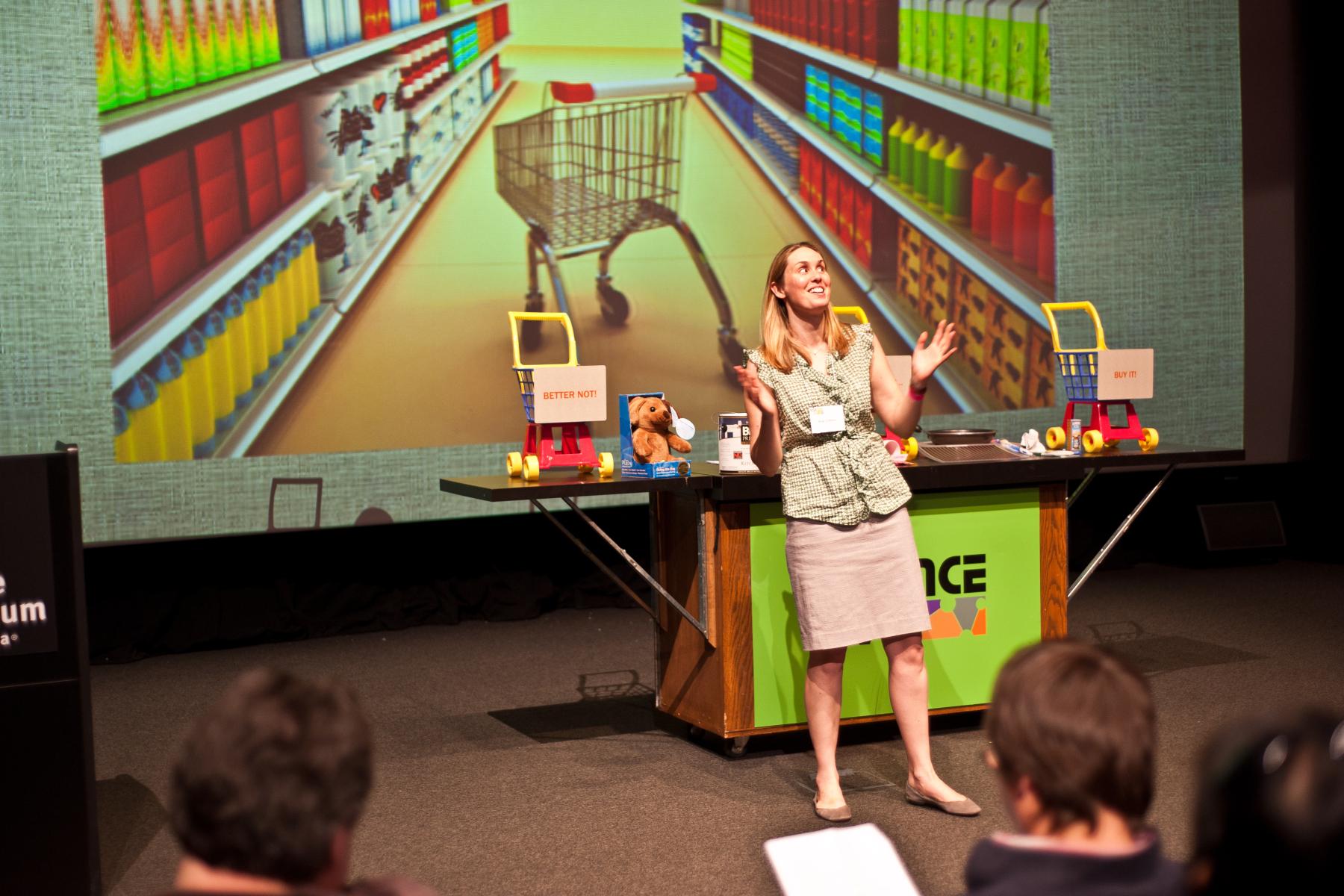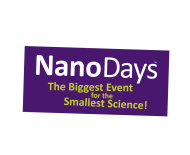DESCRIPTION
Like all new technologies, nanotechnology has costs, risks, and benefits we cannot always predict. The Would You Buy That? stage presentation examines and explores ways our consumer behavior both impacts and is impacted by new technology. By looking at historical examples and current and future nanotechnologies, audience members weigh the risks versus the benefits and make group purchase decisions. Sometimes we need to stop and think more about a consumer decision.
This program examines and explores social and ethical issues of consumer products from the past, present and future. Audience members are asked to weigh the risks versus the benefits. The audience members are responsible for making choices on what products to buy, question, or not buy for themselves, their families, and their communities in this fun and interactive show.
DESCRIPTION
Like all new technologies, nanotechnology has costs, risks, and benefits we cannot always predict. The Would You Buy That? stage presentation examines and explores ways our consumer behavior both impacts and is impacted by new technology. By looking at historical examples and current and future nanotechnologies, audience members weigh the risks versus the benefits and make group purchase decisions. Sometimes we need to stop and think more about a consumer decision.
This program examines and explores social and ethical issues of consumer products from the past, present and future. Audience members are asked to weigh the risks versus the benefits. The audience members are responsible for making choices on what products to buy, question, or not buy for themselves, their families, and their communities in this fun and interactive show.
TRAINING VIDEOS
OBJECTIVES
BIG IDEA
By engaging in this dynamic, interactive presentation, the audience and the presenter discuss their values and choices and learn more about nano products they could buy (or not buy) for themselves, their families, and their communities.
There are risks and benefits for nearly every consumer product available for purchase. Learning about the risks and benefits of consumer goods, especially as it relates to nanotechnology and nanoscale engineering of products, will encourage audience members to research, question and make educated decisions about what they purchase and why.
LEARNING GOALS
Increase awareness that there are potential positive and negative impacts of nanoscale technology.
Nanoscale technology and nanoscale engineering is a people story.
To encourage the visitor to learn more about nanoscale technology and nanoscale engineering.
To explain the importance of being informed about consumer goods and their risks and benefits.
NANO CONTENT MAP
Nanometer-sized things are very small, and often behave differently than larger things do.
Scientists and engineers have formed the interdisciplinary field of nanotechnology by investigating properties and manipulating matter at the nanoscale.
Nanoscience, nanotechnology, and nanoengineering lead to new knowledge and innovations that weren't possible before.
Nanotechnologies—and their costs, utility, risks, and benefits—are closely interconnected with society and with our values.
DOWNLOAD FILES
- Would You Buy That Lesson Plan (2014 NanoDays version) (doc)
- Would You Buy That Lesson Plan (2014 NanoDays version) (pdf)
- Would You Buy That Slides (2014 NanoDays version) (ppt)
- Would You Buy That Graphic Cards (2014 NanoDays version) (pdf)
- "Would you Buy That?' Script (2011 version) (DOC)
- "Would you Buy That?" Slides (2011 version) (PPS)
- "Would you Buy That?' Slides (2011 version) (PPT)
- Would You Buy That Lesson Plan (Spanish) (doc)
- Would You Buy That Lesson Plan (Spanish) (pdf)
- Would You Buy That Slides (Spanish) (ppt)
- Would You Buy That Graphic Cards (Spanish) (pdf)
Credits
Sciencenter (2014 NanoDays version)
Science Museum of Minnesota (2011 version)
Developed for the NISE Network with funding from the National Science Foundation under Award Numbers 0532536 and 0940143. Any opinions, findings, and conclusions or recommendations expressed in this product are those of the authors and do not necessarily reflect the views of the Foundation.
Creative Commons Attribution Non-Commercial Share Alike 3.0 United States (CC BY-NC-SA 3.0 US).
View more details

NISE Network products are developed through an iterative collaborative process that includes scientific review, peer review, and visitor evaluation in accordance with an inclusive audiences approach. Products are designed to be easily edited and adapted for different audiences under a Creative Commons Attribution Non-Commercial Share Alike license. To learn more, visit our Development Process page.




